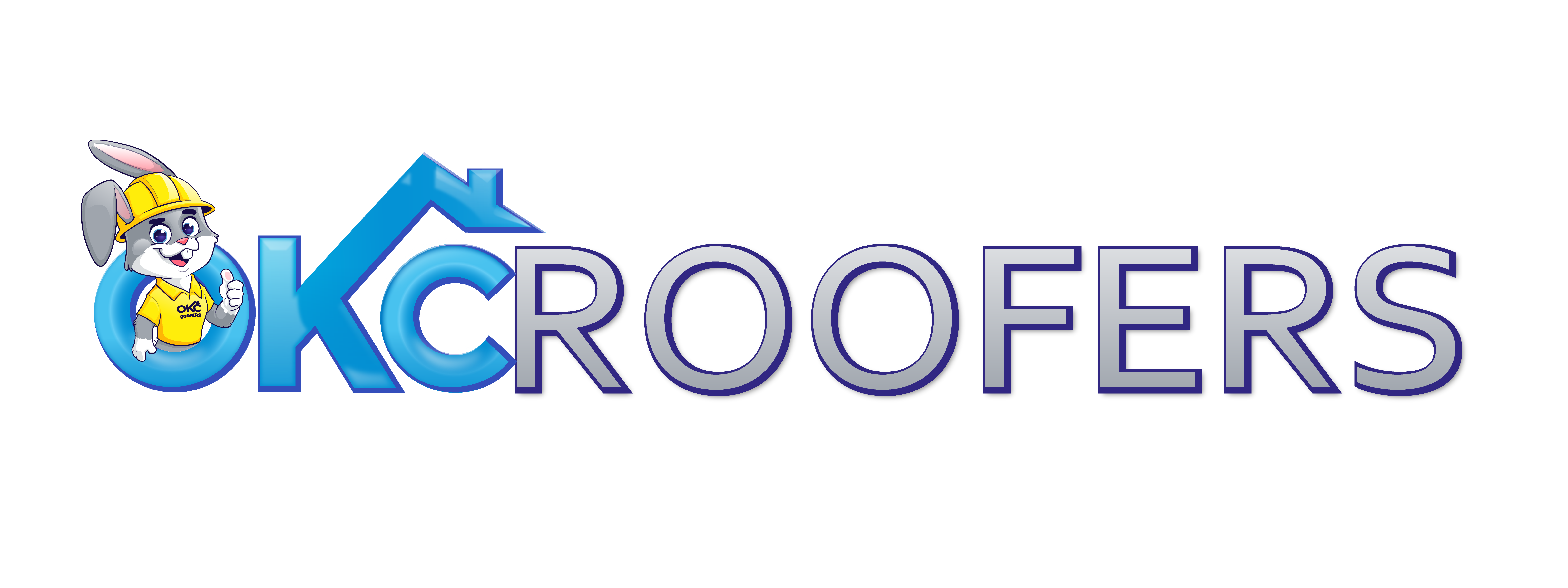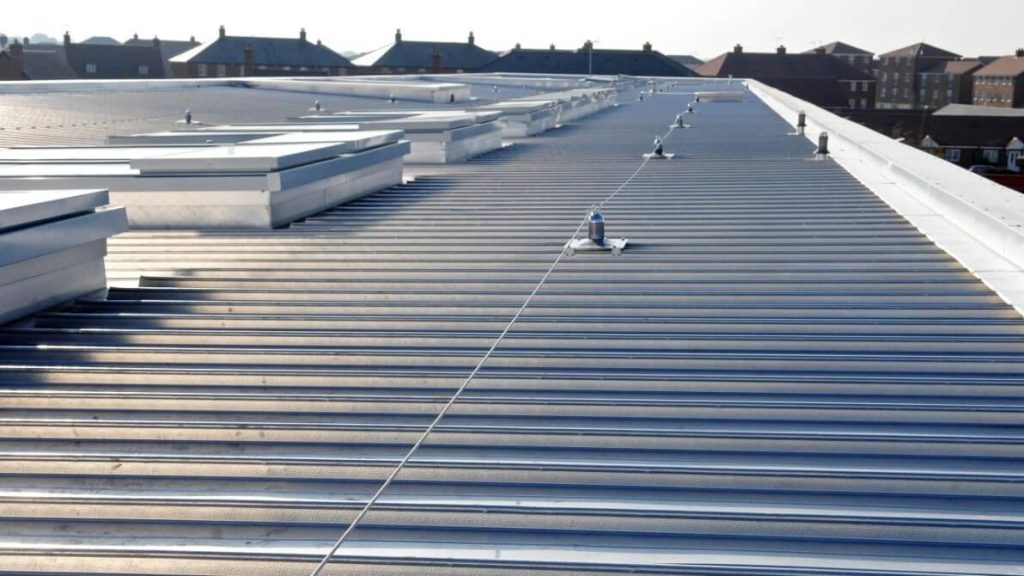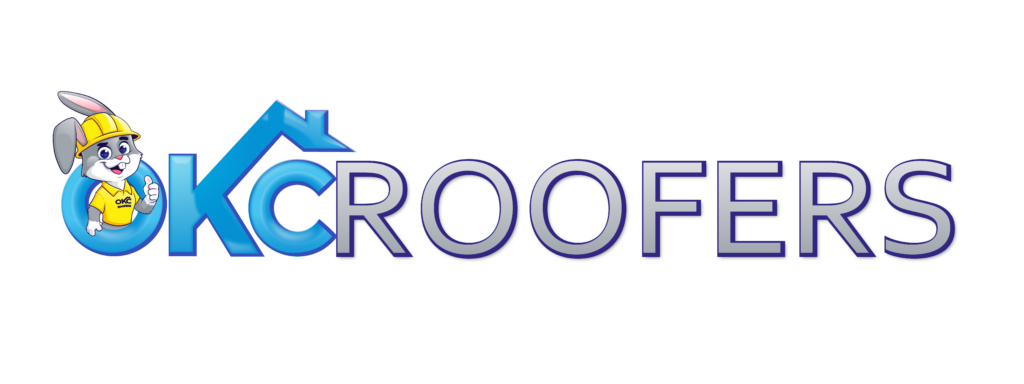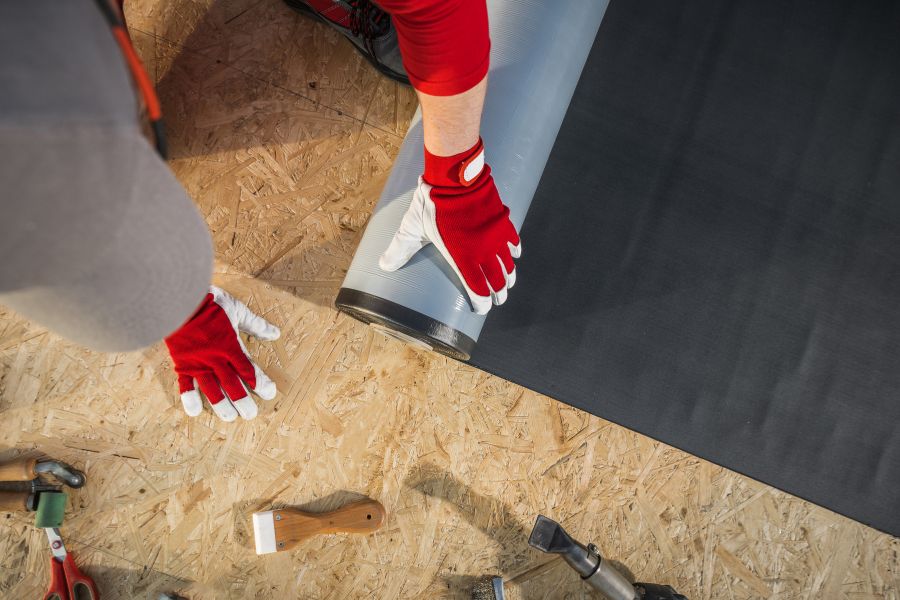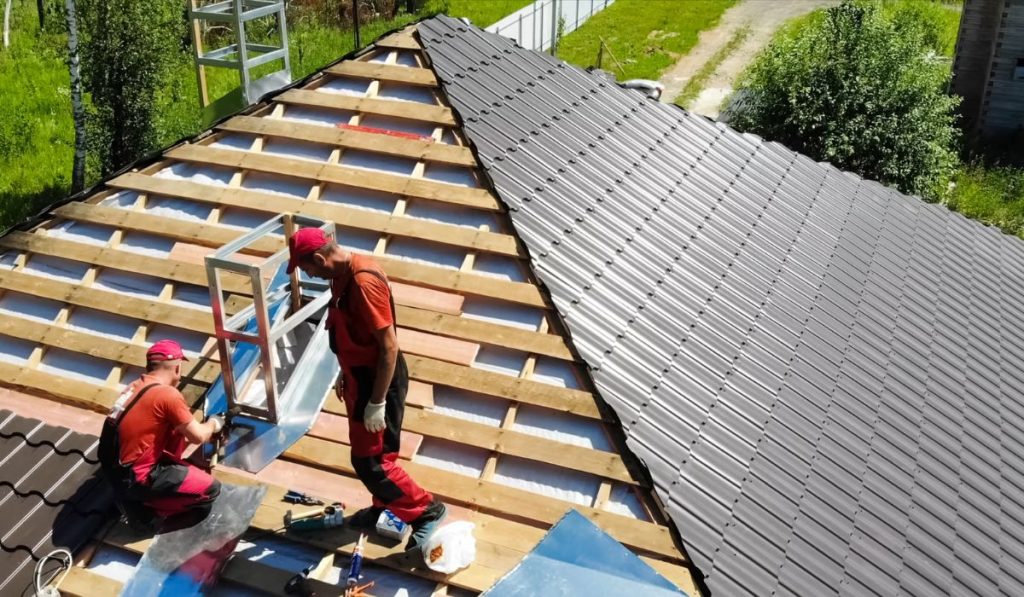For business owners and property managers, a strong, reliable roof is key to protecting your commercial property.
Commercial roofing is designed for larger, more complex structures.
In this guide, we’ll break down what commercial roofing involves, explore the different types available, and explain why investing in a quality roof is essential for your business.
What is commercial roofing?
Commercial roofing involves roof systems designed for businesses, warehouses, and other commercial properties. These roofs are built to handle larger, more complex needs compared to residential ones.
Key Takeaways
- Commercial roofing systems are specifically designed for larger buildings and offer enhanced durability and functionality.
- Various types of commercial roofs, such as flat, metal, and TPO, provide different benefits depending on the needs of the property.
- Proper maintenance and regular inspections are crucial for the longevity of a commercial roof, as roof issues can result in costly repairs.
What is Commercial Roofing?
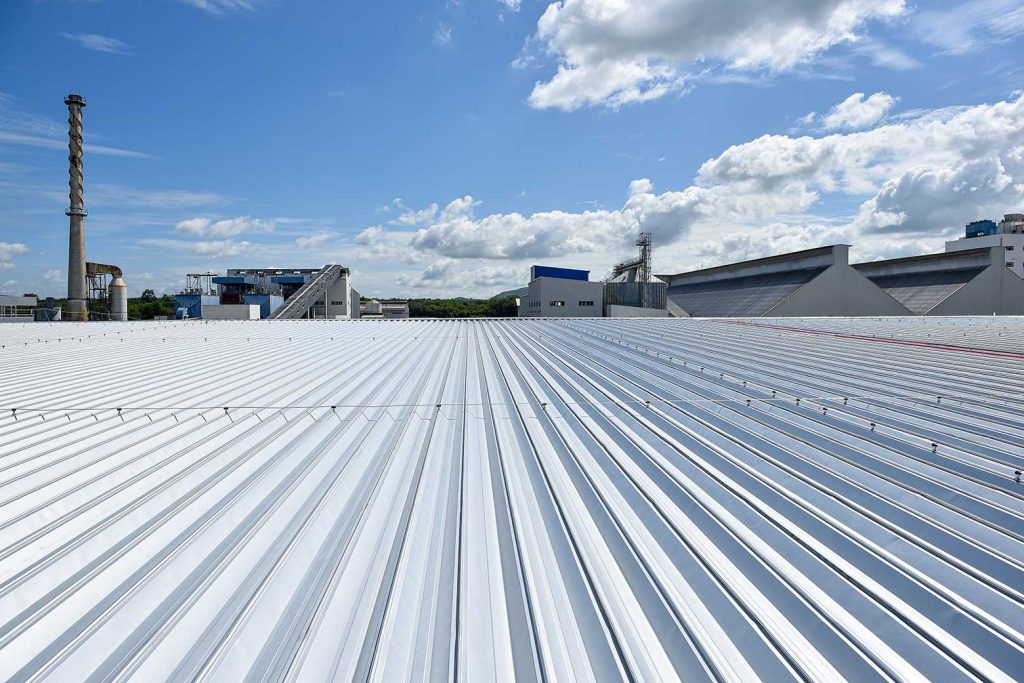
Commercial roofing refers to roofing systems specifically designed for commercial buildings such as offices, retail spaces, warehouses, and industrial properties.
Unlike residential roofing, which typically features pitched roofs and smaller structures, commercial roofs often involve larger, flat, or low-slope surfaces.
This type of roofing must meet the demands of the building’s size, usage, and environmental conditions.
Commercial roofs are designed to be durable, long-lasting, and able to withstand the elements over extended periods of time.
In addition to the basic function of providing protection from the elements, commercial roofing systems must also accommodate the structural and functional needs of a business.
This includes factors such as the building’s insulation, energy efficiency, and the ability to support HVAC systems, solar panels, or other equipment.
The Different Types of Commercial Roofing Systems
There are several types of roofing systems available for commercial buildings, each offering distinct benefits.
The choice of system will depend on factors such as the building’s purpose, climate, budget, and the desired aesthetic.
Below, we explore some of the most popular types of commercial roofing systems.
1. Flat Roofing Systems
Flat roofs are one of the most common types of commercial roofing. As the name suggests, these roofs are almost level, with a slight slope to allow for drainage.
Flat roofing is ideal for commercial properties that require additional space for equipment or want a modern, minimalistic appearance.
They are often used for office buildings, retail spaces, and warehouses.
Materials: Flat roofs can be made from materials like built-up roofing (BUR), modified bitumen, and single-ply membranes.
Benefits: Flat roofs offer easy access for maintenance and are cost-effective to install. They also provide ample space for equipment such as HVAC units and solar panels.
2. Metal Roofing
Metal roofing is another popular option for commercial buildings due to its durability and energy efficiency.
Available in materials such as steel, aluminium, and copper, metal roofs are designed to withstand harsh weather conditions, making them ideal for areas with extreme temperatures or heavy rainfall.
Materials: Steel, aluminium, zinc, copper, and more.
Benefits: Metal roofing is long-lasting, energy-efficient, and fire-resistant. It also reflects heat, which can help reduce energy costs during the summer months.
3. TPO Roofing (Thermoplastic Olefin)
TPO roofing has become increasingly popular in the commercial roofing industry due to its energy-efficient properties and affordable installation costs.
It’s a single-ply membrane roofing system made from a blend of rubber and plastic, providing excellent protection against the elements.
Materials: TPO is made from a blend of ethylene-propylene rubber and polypropylene plastic.
Benefits: TPO is known for its heat-reflective properties, which can help reduce cooling costs.
It is also resistant to UV radiation and chemical exposure, making it a great choice for commercial properties in sunny climates.
4. EPDM Roofing (Ethylene Propylene Diene Monomer)
EPDM roofing is a popular choice for flat-roof commercial buildings.
Known for its durability and low maintenance requirements, EPDM is a synthetic rubber roofing membrane that has been used for decades in the commercial roofing sector.
Materials: EPDM is a type of synthetic rubber made from ethylene and propylene.
Benefits: EPDM is highly durable, weather-resistant, and cost-effective. It is ideal for properties located in areas with moderate to extreme weather conditions.
5. PVC Roofing (Polyvinyl Chloride)
PVC roofing systems are often chosen for their strength, durability, and energy efficiency.
This type of commercial roof is made from a plastic-based material that resists chemicals, UV rays, and extreme temperatures.
Materials: PVC membranes are made from polyvinyl chloride, a type of plastic.
Benefits: PVC roofs are highly resistant to water and weather, and they offer excellent insulation properties.
They are also lightweight and relatively easy to install, making them ideal for commercial buildings that require a high-performance roofing system.
Why Is Commercial Roofing Important?
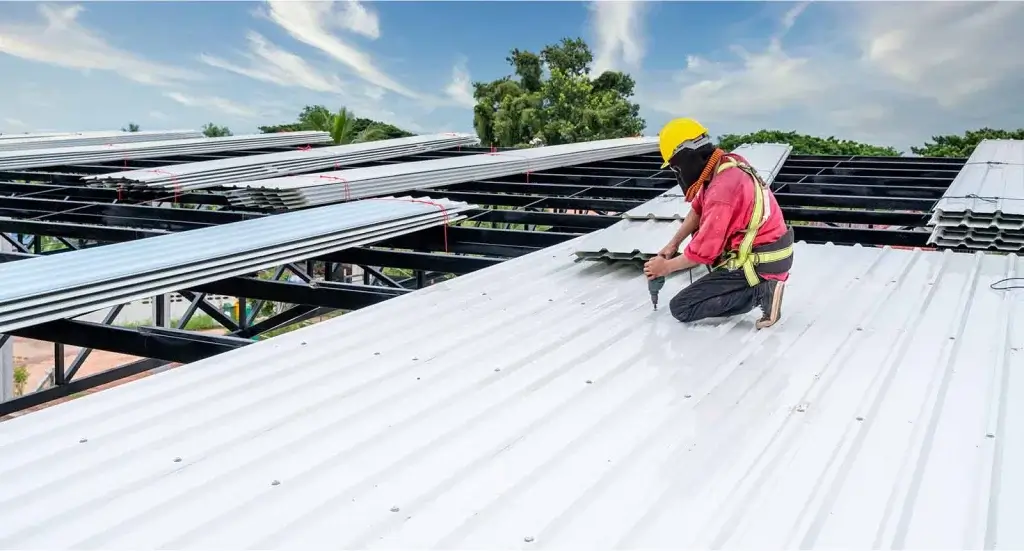

A commercial roof serves more purposes than just covering the building.
It’s an integral part of the property that ensures safety, comfort, and protection for both the structure and its occupants.
Here’s why a commercial roofing system is so important:
1. Protection Against the Elements
A high-quality commercial roof acts as a barrier against weather conditions like rain, snow, wind, and extreme temperatures.
It helps prevent leaks and water damage that could affect the building’s structure, equipment, and inventory.
2. Energy Efficiency
Many modern commercial roofing systems are designed with energy efficiency in mind.
For example, materials like TPO and metal reflect heat, helping to reduce cooling costs during the warmer months.
Proper insulation and energy-efficient roofing systems can lead to significant savings on energy bills.
3. Aesthetic Appeal
The roof of your commercial property plays a large role in its overall appearance.
A well-maintained roof can enhance the building’s curb appeal, attracting customers or tenants and improving the building’s value.
4. Support for Equipment
Commercial roofs are often used to support equipment such as HVAC units, solar panels, and other machinery.
A strong and reliable roofing system is essential to ensure that these heavy units are safely installed without causing damage to the structure.
Commercial Roofing Maintenance and Longevity
To keep your commercial roof in optimal condition, regular maintenance and inspections are essential.
Depending on the type of roofing system, maintenance tasks may include cleaning the gutters, checking for leaks, inspecting seals and flashing, and ensuring that equipment on the roof is secure. For homeowners, scheduling regular inspections or services such as gutter repair in OKC can help prevent costly water damage and extend the life of the roof.
Proper maintenance can significantly extend the life of your commercial roof and prevent costly repairs.
On average, a well-maintained commercial roof can last anywhere from 15 to 50 years, depending on the materials and climate.
How Much Does Commercial Roofing Cost?
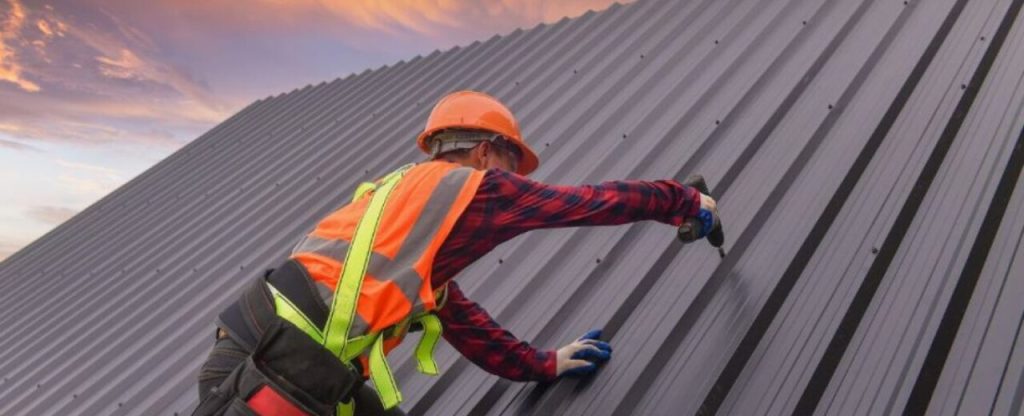

On average, you can expect to pay anywhere from $3 to $10 per square foot for commercial roofing installation.
The cost of commercial roofing can vary widely depending on several factors such as the size of the building, the type of roofing material, and the complexity of the installation.
Factors like the region, type of material, and labour costs will influence the final price.
For example, metal roofing may cost more upfront but can be more cost-effective in the long run due to its durability and energy efficiency.
On the other hand, flat roofing systems like TPO or EPDM tend to be more affordable to install, but they may require more frequent maintenance.
How to Choose the Right Commercial Roofing System
Selecting the right commercial roofing system depends on several factors:
Climate: The local climate plays a major role in determining which roofing material is best suited for your property.
If you’re in an area with heavy rainfall, a TPO or EPDM roof may be ideal. For properties in hot climates, metal or PVC roofing can help reduce heat absorption.
Budget: Consider the initial cost of installation as well as long-term maintenance and repair costs.
While some materials may be more expensive upfront, they may save money in the long run due to their durability and energy efficiency.
Building Type: The size and type of the commercial property also affect roofing choices.
Larger buildings may require a roof system that is able to handle more weight and provide more insulation, such as a metal roof or a flat roofing system.
Aesthetics: Some businesses may need to consider how the roof fits with the building’s design.
For instance, if the roof is highly visible, you may want to choose a material that complements the building’s exterior design.
Frequently Asked Questions
1. What is the best type of commercial roofing?
The best type of commercial roofing depends on factors such as climate, budget, and building size. Common options include flat roofs, metal roofing, and TPO.
2. How long does a commercial roof last?
Commercial roofs typically last 15 to 50 years, depending on the material and maintenance. Regular inspections and maintenance can extend the lifespan of your roof.
3. How much does commercial roofing cost?
Commercial roofing costs vary by material and size. On average, installation costs range from $3 to $10 per square foot, depending on the roofing system chosen.
Conclusion
Commercial roofing is an essential part of any business or property.
Whether you’re protecting valuable equipment, ensuring the safety of employees and tenants, or improving the building’s curb appeal, investing in a reliable and durable roofing system is key. That’s why many property owners turn to affordable roofing services in Moore, OK to get high-quality results without breaking the bank.
Understanding the different types of commercial roofs, how to maintain them, and the costs involved can help you make an informed decision when it comes to installing or replacing a commercial roof.
If you are considering a commercial roof installation or upgrade, be sure to work with experienced professionals who can assess your building’s specific needs and recommend the best roofing solution for your property.
